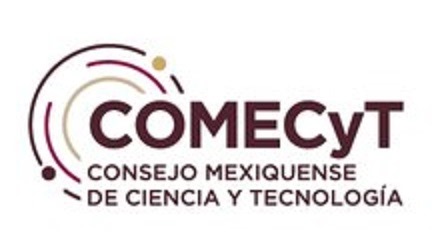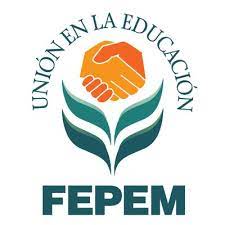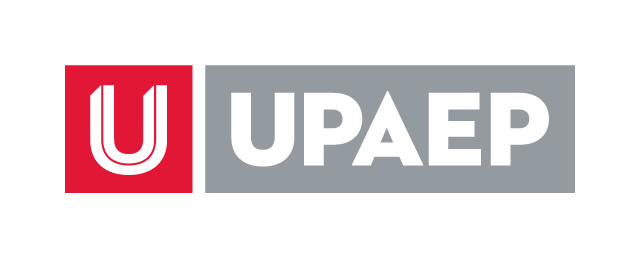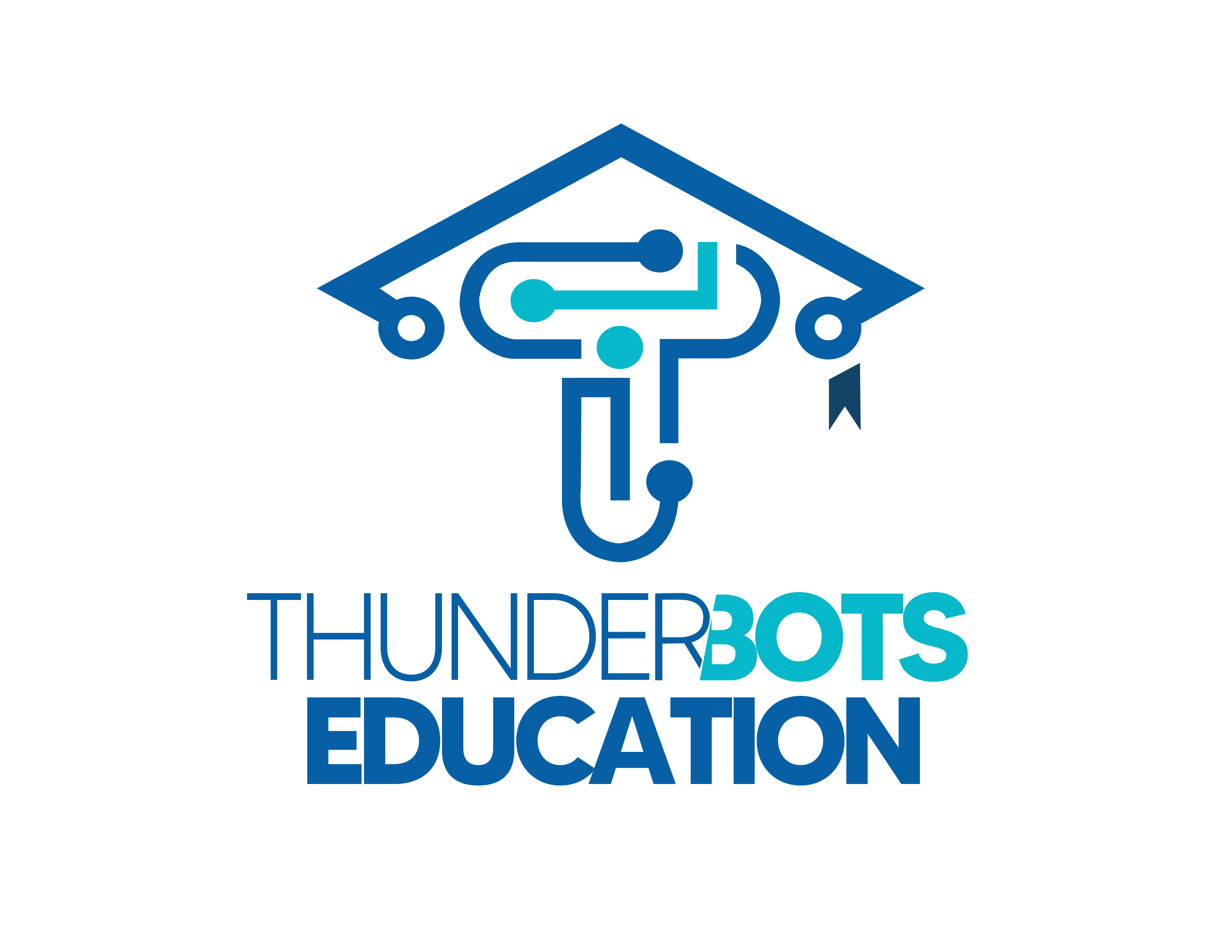PP – MA – 113 – HA AquaBot
PP – MA – 113 – HA AquaBot
Categoría: Pandilla Petit, (preescolar y 1ro. y 2do. año de primaria)
Área de participación: Medio Ambiente
Resumen
En nuestro proyecto “AquaBot”, queremos ayudar a limpiar el océano construyendo un robot que pueda recoger basura del agua. Primero aprendimos sobre la contaminación y cómo afecta a los animales y plantas que viven en el mar. Luego, imaginamos y dibujamos nuestro propio robot usando materiales reciclados como botellas de plástico, un motor pequeño y tubos.
Construimos el robot y lo probamos en una pecera, donde pusimos pompones para simular la basura. Nuestro robot pudo recoger la basura, pero descubrimos que a veces se llenaba muy rápido. Aprendimos que necesitamos mejorarlo para que pueda recoger más basura sin detenerse.
Con este proyecto, entendimos lo importante que es cuidar los océanos y cómo la tecnología puede ayudarnos a resolver problemas. También aprendimos que trabajando en equipo y siendo creativos podemos encontrar soluciones para cuidar el planeta.
Pregunta de Investigación
¿Cómo podemos construir un robot que ayude a recoger la basura del océano?Planteamiento del Problema
El océano está lleno de basura que las personas tiran, como plásticos y otros residuos. Esta basura daña a los animales que viven en el agua, como peces y tortugas, y también afecta a las plantas marinas. Si no limpiamos el océano, cada vez habrá más basura y menos animales.
Queremos ayudar a resolver este problema construyendo un robot que pueda recoger la basura del agua. Así, nuestro océano será más limpio y los animales y plantas podrán vivir mejor.
Antecedentes
La salud de los océanos es crucial para el equilibrio del ecosistema global y para la supervivencia de muchas especies marinas, incluida la humana. La contaminación en los océanos tiene impactos negativos en la pesca, el turismo y la calidad del agua potable.
Los mares, lagos y ríos están siendo contaminados por las fábricas y los humanos poniendo en riesgo la disponibilidad de agua limpia para uso doméstico y la continuidad de algunas especies fundamentales para los ecosistemas a nivel mundial.
México no es la excepción, los mares, lagos, presas y ríos están siendo afectados por la alta contaminación. situaciones como el sargazo y suciedad en las playas turísticas como Acapulco o Cancún.
Esta contaminación afecta el ciclo del agua, elevando la temperatura, favoreciendo la evaporación y sequías, deshielo y lluvias fuertes, lo cual resulta en escasez de agua en la ciudad de México. Por ejemplo, la presa que abastece a nuestra zona que es el Cutzamala, está teniendo escasos niveles de agua lo cuál ya está afectando a todas nuestra colonias en Zona Esmeralda, si esto continua y cae lluvia podemos dejar de tener agua a finales de junio. Otros sistemas de alimentación de agua que están teniendo impactos en el Estado de México (Atizapán de Zaragoza) son: Bosques del Lago, Presa Madín y Zumpango.
- Los grandes desafíos son:
La vasta extensión de los océanos dificulta la recolección manual de desechos.
La falta de conciencia y acción sobre el problema de la contaminación en los océanos, ríos etc.
La necesidad de soluciones sostenibles y efectivas para abordar el problema a largo plazo.
Estudio de la Universidad de California, Santa Bárbara (UCSB): investigadores de la UCSB han realizado extensos estudios sobre la distribución y el impacto de los desechos plásticos en los océanos. Sus investigaciones han revelado la presencia generalizada de microplásticos en los mares, así como los efectos negativos en la vida marina y los ecosistemas acuáticos.
Informe del Programa de las Naciones Unidas para el Medio Ambiente (PNUMA): El PNUMA ha publicado varios informes que destacan la magnitud del problema de la contaminación en los océanos y la necesidad urgente de acción global. Sus investigaciones han identificado fuentes principales de contaminación, como la basura mal gestionada y los vertidos industriales, y han llamado la atención sobre los impactos ambientales, económicos y sociales.
Investigaciones de la Fundación Ellen MacArthur: ha llevado a cabo investigaciones sobre la economía circular y la gestión de residuos para abordar la contaminación plástica en los océanos. Sus estudios han destacado la importancia de adoptar un enfoque holístico que incluya la reducción, reutilización y reciclaje de materiales para prevenir la acumulación de desechos en los ecosistemas marinos.
Proyecto de Limpieza Oceánica de The Ocean Cleanup: el proyecto liderado por The Ocean Cleanup ha desarrollado tecnologías innovadoras para limpiar los océanos de desechos plásticos. Sus investigaciones han incluido el diseño y despliegue de sistemas de limpieza pasiva que aprovechan las corrientes oceánicas para recolectar basura de manera eficiente.
- Algunos datos estadísticos:
Desechos plásticos:
Según un informe del Foro Económico Mundial, se estima que para 2050 habrá más plástico que peces en los océanos si no se toman medidas drásticas.
La mayoría de los desechos plásticos en los océanos provienen de fuentes terrestres, como la basura mal gestionada y los vertidos de ríos.
Se estima que entre 4.8 y 12.7 millones de toneladas métricas de plástico ingresan a los océanos cada año, según un estudio publicado en la revista Science. - Microplásticos:
Los microplásticos, partículas de plástico de menos de 5 mm de tamaño, están presentes en todos los océanos del mundo.
Un estudio publicado en la revista Environmental Science & Technology estima que hasta 51 billones de partículas de micro plástico están dispersas en los océanos, con concentraciones más altas en áreas cercanas a las zonas urbanas y costeras. - Contaminación Química:
Los productos químicos tóxicos, como los pesticidas y los productos farmacéuticos, pueden contaminar los océanos a través de vertidos industriales y agrícolas
Según la Agencia de Protección Ambiental de Estados Unidos (EPA), aproximadamente el 80% de la contaminación marina proviene de fuentes terrestres. - Impacto en la vida marina:
La contaminación en los océanos tiene un impacto devastador en la vida marina, causando la muerte de aves marinas, mamíferos marinos, tortugas marinas y otros organismos acuáticos.
Se estima que alrededor del 60% de todas las especies de aves marinas han ingerido plástico, según un estudio publicado en la revista Proceedings of the National Academy of Sciences.
Objetivo
Construir un robot usando materiales reciclados que pueda ayudar a limpiar la basura del océano.
Justificación
El proyecto de diseño y construcción de un robot casero para limpiar los océanos se justifica por las siguientes razones:
- Importancia del problema: la contaminación de los océanos es un problema ambiental grave y de alcance global que afecta a la biodiversidad marina, la salud humana y la economía. La acumulación de desechos plásticos y otros residuos en los mares y océanos representa una amenaza para los ecosistemas acuáticos y para las comunidades costeras.
- Relevancia social: la limpieza de los océanos es un tema de interés creciente para la sociedad general, especialmente para las generaciones más jóvenes, quienes serán responsables de proteger y preservar el medio ambiente en el futuro. El proyecto brinda la oportunidad de explorar soluciones tecnológicas creativas y sostenibles para la limpieza de los océanos.
- Educación ambiental: al participar en la construcción de un robot limpiador de océanos, se adquieren habilidades prácticas y se desarrolla una mayor conciencia ambiental que nos convierte en agentes de cambio en la comunidad.
Hipótesis
Si construimos un robot con materiales reciclados, entonces podrá recoger la basura del agua y ayudar a limpiar el océano.
Método (materiales y procedimiento)
Material, equipo y sustancias
- Botella de plástico de 2 litros
- Lata
- Motor pequeño
- Pila de 9V
- Interruptor
- Cutter
- Silicón caliente
- Tijeras
- Taparrosca
- Sharpie
- Cinta de aislar
- Cables de corriente
- Cinta doble cara
- Coladera
- Manguera corta
- Pecera
- Pompones pequeños (simulando basura)
Procedimiento
- Investigar sobre el problema de la contaminación en los océanos y la importancia de mantener limpios los ecosistemas marinos, profundizando en la comprensión del impacto de la contaminación en los océanos y sus efectos en la vida marina.
- Diseñar un prototipo de robot limpiador considerando materiales reciclados y sostenibles. Explorar diferentes diseños y materiales que puedan utilizarse para construir un robot eficiente y respetuoso con el medio ambiente.
- Construir el robot utilizando técnicas básicas de ingeniería y electrónica. Aplicar los conocimientos para ensamblar y conectar los componentes necesarios para el funcionamiento del robot.
- Probar el robot en un entorno simulado para evaluar su eficacia en la recolección de basura.
- Analizar los resultados de las pruebas y realizar ajustes en el diseño del robot según sea necesario.
- Presentar el proyecto y los resultados en la Feria de Ciencias de la escuela para compartir el aprendizaje con los demás compañeros.
Galería Método
Resultados
Logramos construir un robot usando botellas de plástico, un motor y otros materiales reciclados. Lo probamos en una pecera que tenía pompones pequeños para simular la basura en el océano. El robot fue capaz de recoger varios pompones, pero vimos que se llenaba rápido, así que tuvimos que vaciarlo varias veces.
También notamos que algunas piezas del robot no aguantaban bien el agua y el motor necesitaba protección para no mojarse. A pesar de eso, el robot funcionó y recogió la basura tal como lo planeamos.
Galería Resultados
Discusión
Análisis de resultados
- Eficiencia en la recolección de desechos: se analizó la cantidad y el tipo de desechos recolectados por el robot durante las pruebas en el entorno simulado, la capacidad de recolección son cosas no pesadas, pequeñas para que puedan pasar a través del tubo y ver que la capacidad del robot es limitada por lo cual se tiene que ir vaciando conforme se va llenando el contenedor.
- Durabilidad y resistencia: se realizaron varias pruebas de resistencia de la hélice con las diferentes pilas para probar la que tuviera más capacidad de succión y que el robot soportará la intensidad de la hélice.
- Tiempo y costo de construcción: se evaluó el tiempo y los recursos necesarios para construir el prototipo, se tomó 3 días para hacerlo y el material fue reciclado con lo cual, no llevó gran inversión.
- Áreas de mejora, para que el agua no pase a la parte donde está el motor, es necesario realizar un encapsulamiento del motor y agregar un tubo adicional para que el agua que succiona el robot la vuelva a regresar al océano
Conclusiones
Pudimos construir un robot con materiales reciclados que puede recoger basura del agua. Nuestro robot funcionó bien cuando lo probamos en una pecera con basura pequeña, como pompones.
Aprendimos que podemos mejorar algunas partes del robot, como proteger mejor el motor para que no se moje y hacer que pueda recoger más basura sin llenarse tan rápido.
Este proyecto nos ayudó a pensar en formas de cuidar el océano y nos enseñó que la tecnología puede ayudar a resolver problemas. Sabemos que hay mucho más por hacer para limpiar los océanos, pero este es un buen comienzo.
Bibliografía
- Brown,K.L. (2017). DIY Robotics: A Guide to Building Your Own Robot. Maker Media.
- García, M.A. (2020) Robotics in Ocean Cleanup: Current Trends and Future Prospects. Journal of Marine Technology.
- Johnson, E. (2019). Clean Oceans: Strategies for reducing Plastic Pollution. Ocean Conservation Research
- Li, H., & Chen, Z. (2019). Design and Development of Underwater Cleaning Robots. International Conference on Robotics and Automation.
- Patel. R (2018). Microplastics in the Marine Environment: Sources, Distribution, and impact on Marine Life. Marine Pollution Bulletin.
- Williams, T.A. (2021). Marine Pollution: An Overview of the Problema and Potential Solutions. Environmental Science & Technology Review.
PP – MA – 113 – HA AquaBot
PP – MA – 113 – HA AquaBot
Summary
In our project “AquaBot,” we want to help clean the ocean by building a robot that can collect trash from the water. First, we learned about pollution and how it affects the animals and plants that live in the sea. Then, we imagined and drew our own robot using recycled materials like plastic bottles, a small motor, and tubes.
We built the robot and tested it in a fish tank, where we put pom-poms to simulate the trash. Our robot was able to collect the trash, but we found that it filled up quickly. We learned that we need to improve it so it can collect more trash without stopping.
With this project, we understood how important it is to take care of the oceans and how technology can help solve problems. We also learned that working as a team and being creative can help us find solutions to take care of the planet.
Research Question
How can we build a robot that helps collect trash from the ocean?Problem approach
The ocean has a lot of trash that people throw away, like plastics and other waste. This trash hurts the animals that live in the water, like fish and turtles, and it also affects the plants. If we don’t clean the ocean, there will be more trash and fewer animals.
We want to help solve this problem by building a robot that can collect trash from the water. That way, our ocean will be cleaner, and animals and plants will be able to live better.
Background
The health of the oceans is crucial for the balance of the global ecosystem and for the survival of many marine species, including humans. Ocean pollution has negative impacts on fishing, tourism, and the quality of drinking water.
Seas, lakes, and rivers are being polluted by factories and humans, putting the availability of clean water for domestic use at risk, as well as the survival of some species essential to ecosystems worldwide.
Mexico is no exception; its seas, lakes, reservoirs, and rivers are being affected by high levels of pollution. Situations like sargassum and trash on tourist beaches such as Acapulco or Cancun are examples of this.
This pollution affects the water cycle, raising temperatures, increasing evaporation, and causing droughts, melting ice, and heavy rains, which result in water shortages in Mexico City. For example, the reservoir that supplies our area, Cutzamala, has low water levels, which is already affecting all of our neighborhoods in Zona Esmeralda. If this continues and there is no rain, we might run out of water by the end of June. Other water supply systems impacted in the State of Mexico (Atizapán de Zaragoza) include Bosques del Lago, Presa Madín, and Zumpango.
The main challenges are:
- The vast size of the oceans makes it difficult to manually collect waste.
- The lack of awareness and action regarding the problem of pollution in oceans, rivers, etc.
- The need for sustainable and effective solutions to address the problem in the long term.
Study from the University of California, Santa Barbara (UCSB): UCSB researchers have conducted extensive studies on the distribution and impact of plastic waste in the oceans. Their research has revealed the widespread presence of microplastics in the seas, as well as the negative effects on marine life and aquatic ecosystems.
Report from the United Nations Environment Programme (UNEP): UNEP has published several reports highlighting the scale of ocean pollution and the urgent need for global action. Their research has identified key sources of pollution, such as poorly managed waste and industrial discharges, and has called attention to the environmental, economic, and social impacts.
Research by the Ellen MacArthur Foundation: This organization has conducted studies on the circular economy and waste management to address plastic pollution in the oceans. Their studies have emphasized the importance of adopting a holistic approach that includes reducing, reusing, and recycling materials to prevent the accumulation of waste in marine ecosystems.
The Ocean Cleanup Project: Led by The Ocean Cleanup, this project has developed innovative technologies to clean the oceans of plastic waste. Their research has included the design and deployment of passive cleanup systems that utilize ocean currents to efficiently collect trash.
Some Statistics:
Plastic Waste:
- According to a report from the World Economic Forum, it is estimated that by 2050, there will be more plastic than fish in the oceans if drastic measures are not taken.
- Most plastic waste in the oceans comes from land-based sources, such as poorly managed waste and river discharges.
- It is estimated that between 4.8 and 12.7 million metric tons of plastic enter the oceans each year, according to a study published in the journal Science.
Microplastics:
- Microplastics, particles of plastic smaller than 5 mm in size, are present in all the world’s oceans.
- A study published in the journal Environmental Science & Technology estimates that up to 51 trillion microplastic particles are scattered across the oceans, with higher concentrations in areas near urban and coastal zones.
Chemical Pollution:
- Toxic chemicals, such as pesticides and pharmaceuticals, can contaminate oceans through industrial and agricultural discharges.
- According to the United States Environmental Protection Agency (EPA), approximately 80% of marine pollution comes from land-based sources.
Impact on Marine Life:
- Ocean pollution has a devastating impact on marine life, causing the death of seabirds, marine mammals, sea turtles, and other aquatic organisms.
- It is estimated that around 60% of all seabird species have ingested plastic, according to a study published in the journal Proceedings of the National Academy of Sciences.
Objective
To build a robot using recycled materials that can help clean up trash from the ocean.
Justification
The project of designing and building a homemade robot to clean the oceans is justified for the following reasons:
Importance of the problem: Ocean pollution is a serious global environmental issue that affects marine biodiversity, human health, and the economy. The accumulation of plastic waste and other debris in the seas and oceans poses a threat to aquatic ecosystems and coastal communities.
Social relevance: Ocean cleanup is a growing concern for society, especially for younger generations, who will be responsible for protecting and preserving the environment in the future. This project provides an opportunity to explore creative and sustainable technological solutions for cleaning the oceans.
Environmental education: By participating in the construction of an ocean-cleaning robot, practical skills are gained, and a greater environmental awareness is developed, turning us into agents of change within the community.
Hypothesis
If we build a robot with recycled materials, then it will be able to collect trash from the water and help clean the ocean.
Method (materials and procedure)
Materials, Equipment, and Substances
- 2-liter plastic bottle
- Can
- Small motor
- 9V battery
- Switch
- Cutter
- Hot glue
- Scissors
- Bottle cap
- Sharpie
- Electrical tape
- Wires
- Double-sided tape
- Strainer
- Short hose
- Fish tank
- Small pom-poms (simulating trash)
Procedure
- Research the problem of ocean pollution and the importance of keeping marine ecosystems clean, deepening the understanding of the impact of pollution on oceans and its effects on marine life.
- Design a prototype of a cleaning robot, considering recycled and sustainable materials. Explore different designs and materials that can be used to build an efficient and environmentally friendly robot.
- Build the robot using basic engineering and electronics techniques. Apply the knowledge to assemble and connect the necessary components for the robot to function.
- Test the robot in a simulated environment to evaluate its effectiveness in collecting trash.
- Analyze the test results and make adjustments to the robot’s design as necessary.
- Present the project and results at the school’s Science Fair to share the learning with classmates.
Method Gallery
Results
We were able to build a robot using plastic bottles, a motor, and other recycled materials. We tested it in a fish tank with small pom-poms to simulate trash in the ocean. The robot could pick up several pom-poms, but it filled up quickly, so we had to empty it a few times.
We also noticed that some parts of the robot didn’t hold up well in the water, and the motor needed protection so it wouldn’t get wet. Despite that, the robot worked and collected the trash as we planned.
Results Gallery
Discussion
Results Analysis
Efficiency in waste collection: The amount and type of waste collected by the robot during the tests in the simulated environment were analyzed. The robot is able to collect light, small items that can pass through the tube, but its capacity is limited, meaning the container needs to be emptied as it fills up.
Durability and resistance: Several tests were conducted on the propeller using different batteries to see which one had the most suction power and to ensure that the robot could withstand the intensity of the propeller.
Construction time and cost: The time and resources needed to build the prototype were evaluated. It took 3 days to build, and the materials were recycled, so it did not require a large investment.
Areas for improvement: To prevent water from reaching the motor, it is necessary to encase the motor and add an extra tube to allow the water the robot sucks up to be returned to the ocean.
Conclusions
We were able to build a robot with recycled materials that can pick up trash from the water. Our robot worked well when we tested it in a fish tank with small trash, like pom-poms.
We learned that we can improve some parts of the robot, like protecting the motor better so it doesn’t get wet and making it able to collect more trash without filling up so fast.
This project helped us think of ways to take care of the ocean and showed us that technology can help solve problems. We know there is much more to do to clean the oceans, but this is a good start.
Bibliography
- Brown,K.L. (2017). DIY Robotics: A Guide to Building Your Own Robot. Maker Media.
- García, M.A. (2020) Robotics in Ocean Cleanup: Current Trends and Future Prospects. Journal of Marine Technology.
- Johnson, E. (2019). Clean Oceans: Strategies for reducing Plastic Pollution. Ocean Conservation Research
- Li, H., & Chen, Z. (2019). Design and Development of Underwater Cleaning Robots. International Conference on Robotics and Automation.
- Patel. R (2018). Microplastics in the Marine Environment: Sources, Distribution, and impact on Marine Life. Marine Pollution Bulletin.
- Williams, T.A. (2021). Marine Pollution: An Overview of the Problema and Potential Solutions. Environmental Science & Technology Review.






